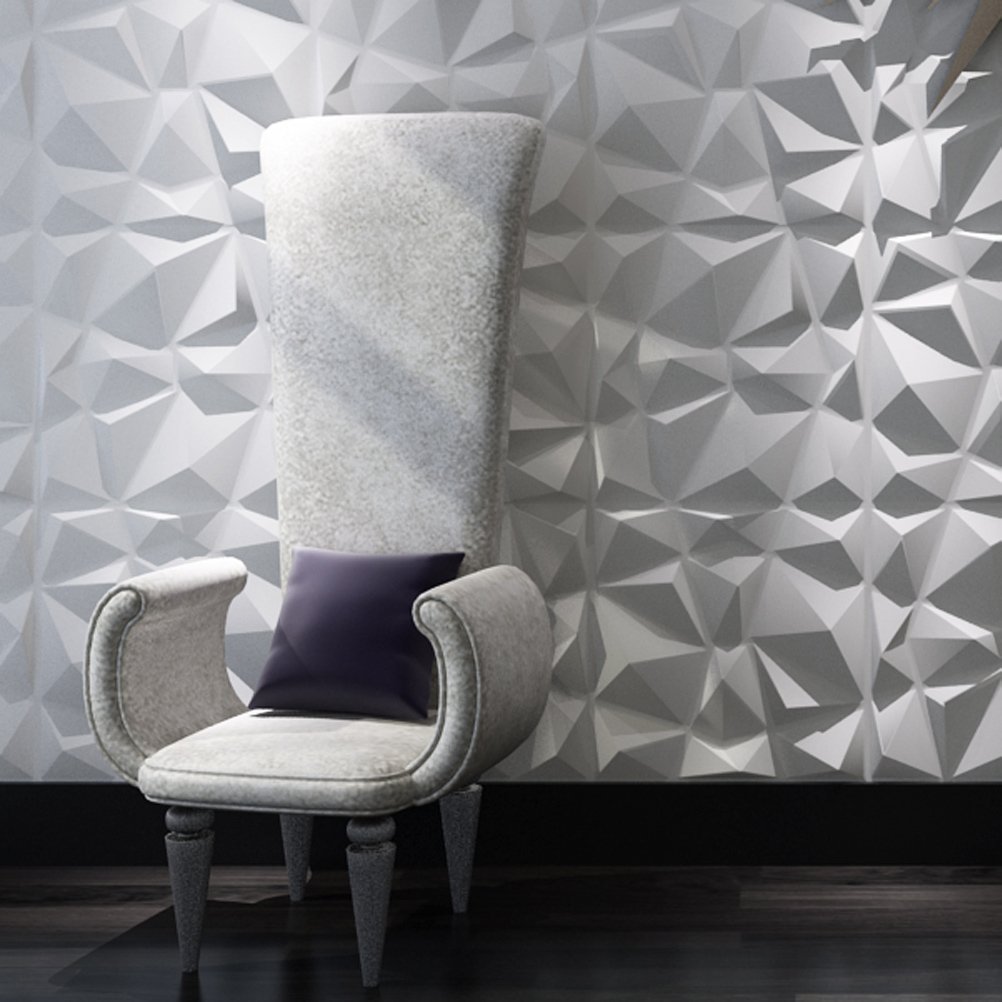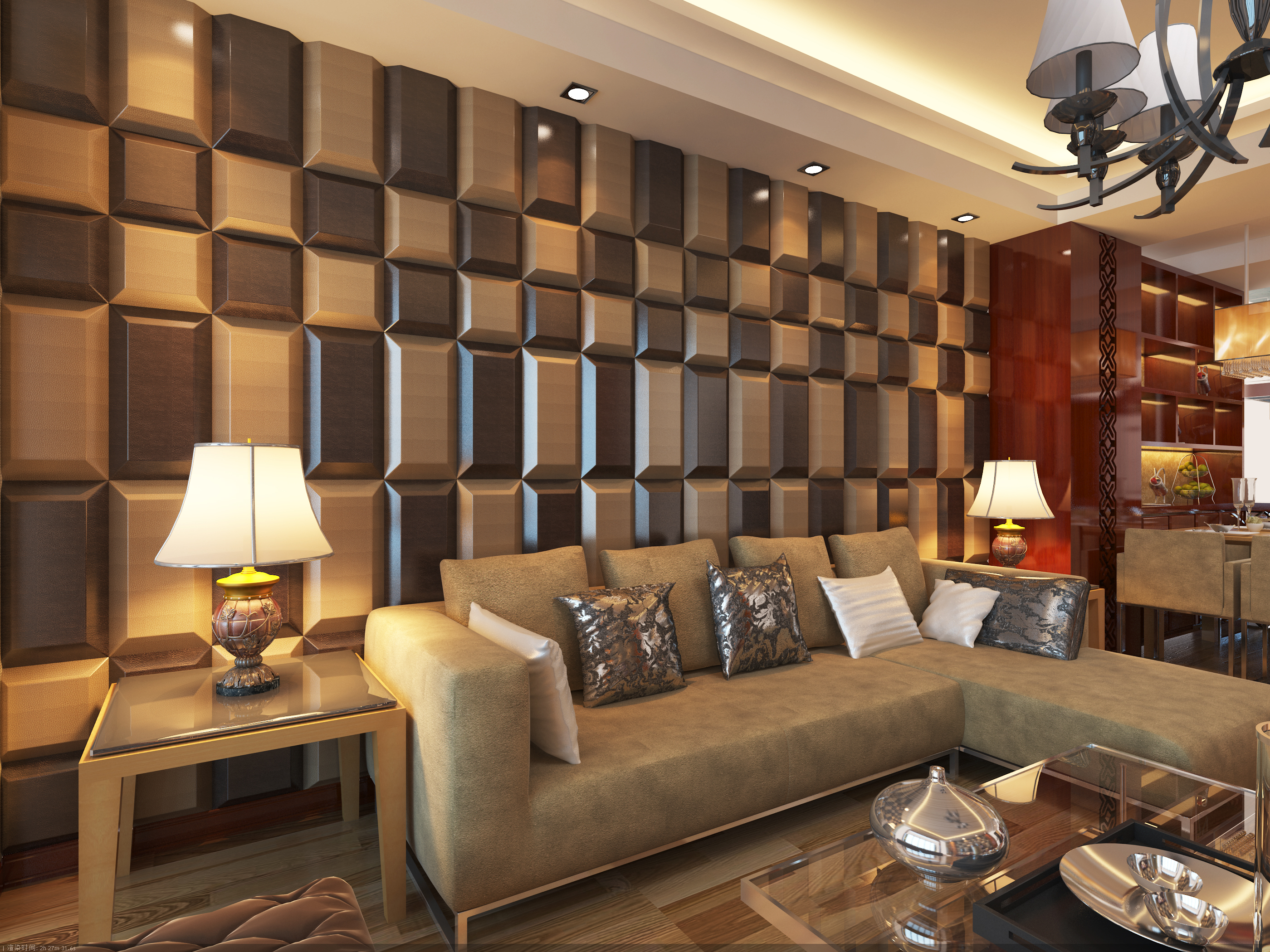About 3D wall panel
3D wall panels are a revolutionary design element that can transform any space into a stunning showcase. These innovative panels add depth, texture, and dimensionality to walls, elevating the overall aesthetic appeal of any room. Their versatility and availability in a wide range of designs, materials, and colors make them a popular choice for decorative and functional purposes. In this article, we'll explore the world of 3D wall panels, including their types, advantages, installation process, maintenance, applications, and design trends. Whether you're an interior design enthusiast or a homeowner looking to revamp your space, this guide will provide you with all the information you need to know about 3D wall panels.
Introduction to 3D Wall Panels
Have you ever walked into a room and felt like something was missing from the walls? 3D wall panels might just be the answer to your décor woes. These panels not only add depth and texture to any space, but they also come in a variety of designs and materials.
What are 3D Wall Panels?
3D wall panels are decorative coverings that create a three-dimensional effect on walls. They come in a variety of materials such as wood, PVC, gypsum, and leather, as well as designs ranging from geometric patterns to natural textures. These panels can be installed on any surface, including ceilings, and are a great way to add visual interest to a room.
The Origin of 3D Wall Panels
The use of decorative wall panels can be traced back to ancient Egyptian and Roman times when they were used to adorn houses and public spaces. However, modern-day 3D wall panels were first introduced in the late 20th century when architects and designers began experimenting with new materials and techniques. Today, 3D wall panel designs can be found in both contemporary and traditional spaces.
Why 3D Wall Panels are Popular
3D wall panels have become increasingly popular in recent years due to their versatility and ability to transform any space. These panels can be used in residential and commercial settings, adding a touch of elegance to lobbies, conference rooms, and even bedrooms. They’re also an ideal solution for those who want to update their homes without undergoing major renovation work.
Types of 3D Wall Panels
Material-based 3D Wall Panels
Material-based 3D wall panels are made from a variety of materials including wood, PVC, gypsum, and leather. Each material has its unique properties such as durability, texture, and color, making it suitable for a specific purpose. For instance, wood panels are ideal for creating a warm, natural look while PVC panels are great for waterproofing areas like bathrooms.
Design-based 3D Wall Panels
Design-based 3D wall panels come in a variety of styles and patterns ranging from geometric shapes to natural textures. These panels can be customized to fit different spaces, depending on the desired effect. For example, a panel with a bubble design may be suitable for a children's play area, while a panel with a brick pattern can provide an industrial look to a loft.
Installation-based 3D Wall Panels
Installation-based 3D wall panels are designed to be easy to install and remove. These panels come in a range of sizes and shapes, making them ideal for those who want a quick and easy update to their space. They can be fixed to the existing wall surface using adhesive, screws, or clips.
Advantages of Using 3D Wall Panels
Enhanced Aesthetics
One of the primary benefits of using 3D wall panels is their ability to add a unique and appealing look to any room. These panels can be used to create a focal point or to add depth and texture to an otherwise plain surface.
Improved Acoustics and Insulation
3D wall panels are also useful in improving acoustics and insulation in a space. They can help to reduce noise levels and create a more comfortable environment, making them ideal for use in commercial settings like restaurants and offices.
Easy Installation and Maintenance
3D wall panels are easy to install, and the process requires minimal tools and materials. These panels can also be quickly replaced if they become damaged or need to be updated, making them a cost-effective choice for those who want versatility in their décor.
How to Install 3D Wall Panels
Pre-installation Preparation
Before installing 3D wall panels, ensure that the surface is clean, dry, and free of any dust or debris. It's also essential to remove any electrical outlet covers or light fixtures that may interfere with the panels' installation.
Tools and Materials Required
Tools required for installation include a measuring tape, a level, a saw, a drill, and a screwdriver. Materials needed include adhesive, screws, drywall anchors, and finishing nails.
Step-by-Step Installation Process
The installation process involves measuring and marking the wall area where the panels will be installed, applying adhesive, securing the panels to the wall, and filling any gaps or holes with a finishing nail. It's essential to follow the manufacturer's instructions carefully to avoid any mistakes during installation.
Maintenance and Cleaning of 3D Wall Panels
If you've recently installed stylish 3D wall panels in your home or office, it's important to know how to maintain and clean them. Here are some tips to keep your 3D wall panels looking great.
Regular Cleaning Tips
To clean your 3D wall panels, use a soft cloth or sponge and warm water. You can also add a few drops of mild detergent to the water for tougher stains. Always avoid using abrasive cleaners or scrubbers that may scratch or damage the surface.
Best Practices for Longevity
To ensure the longevity of your 3D wall panels, avoid exposing them to direct sunlight or high humidity. Use a dehumidifier in damp areas to prevent moisture buildup that can lead to mold and mildew growth. Avoid placing heavy objects or furniture against the panels to prevent scratches or dents.
Common Maintenance Issues and Solutions
If you notice any cracks or signs of damage on your 3D wall panels, it's best to repair them immediately. Utilize a touch-up kit to fix the damage or contact a professional if it's severe. Additionally, if you've painted your 3D wall panels, make sure to preserve the paint job with a sealant spray.
Applications of 3D Wall Panels
3D wall panels are versatile and have numerous applications in various settings. Here are some common applications for 3D wall panels.
Residential Applications
In homes, 3D wall panels can add a stunning visual impact to any room. They are perfect for creating feature walls in living rooms, kitchens, or bedrooms. They can also provide a unique touch to bathroom walls.
Commercial Applications
In commercial settings, 3D wall panels can create a striking visual appeal in offices, hotels, restaurants, and retail stores. They add interest to walkways, reception areas, and conference rooms.
Industrial Applications
3D wall panels can also be applied in industrial settings such as factories or warehouses. Their durability and ease of installation make them ideal for use as protective coverings or for noise reduction purposes.
Trends and Designs in 3D Wall Panels
3D wall panels come in various designs and patterns, and there are always new trends emerging. Here are some of the latest trends in 3D wall panels.
The Latest Trends in 3D Wall Panels
The latest trend in 3D wall panels involves using natural materials such as bamboo, wood, or stone to create a rustic and organic look. Metal panels in modern geometric patterns are also gaining popularity.
Popular Designs and Patterns
Some popular designs and patterns include floral, waves, and abstract geometric shapes. You can also get customizable panels with your own images or designs printed on them.
Creative Applications of 3D Wall Panels
3D wall panels can be applied in creative ways such as using them as headboards, room dividers, or even as ceiling decorations. They can also be painted in various colors to create a unique look. With so many design possibilities, the sky's the limit when it comes to being creative with 3D wall panels.In conclusion, 3D wall panels offer a cost-effective and practical solution for enhancing the aesthetics and functionality of any space. From residential to commercial applications, these versatile panels are suitable for a wide range of environments. With proper installation, maintenance, and creative use, 3D wall panels can bring your vision to life and make your space stand out. We hope this article has provided you with useful insights and inspiration to explore the world of 3D wall panels and start transforming your space today.
Frequently Asked Questions (FAQ) About 3D Wall Panels
1. What are the best materials to use for 3D wall panels?
The choice of material depends on the desired look, durability, and functionality. Some popular materials for 3D wall panels include MDF, PVC, gypsum, and natural materials like stone and wood.
2. Can I install 3D wall panels myself, or do I need a professional?
While it's possible to install 3D wall panels yourself with the right tools and skills, it's recommended to seek professional assistance for larger projects or complex designs. Improper installation can lead to aesthetic and functional issues.
3. How do I clean and maintain 3D wall panels?
Regular cleaning with a damp cloth or sponge is typically sufficient for removing surface dirt and dust. Avoid using harsh chemicals or abrasive materials that can damage the panels. For long-term maintenance, follow the manufacturer's instructions and address any issues promptly to prevent further damage.
4. Are 3D wall panels suitable for all types of environments?
3D wall panels are suitable for most interior environments, including residential, commercial, and industrial. However, some materials and designs may not be suitable for high-humidity or high-traffic areas. It's best to consult with a professional or the manufacturer to determine the best options for your specific needs.
Tags: 3D wall panel , 3D Wall Panels , wall panels
Previous: Peel and Stick Tile Backsplash Installation Guide(Thicker Version)
Next: Elevate Your Space with Top 5 PVC 3D Wall Panels for Stylish Interiors

